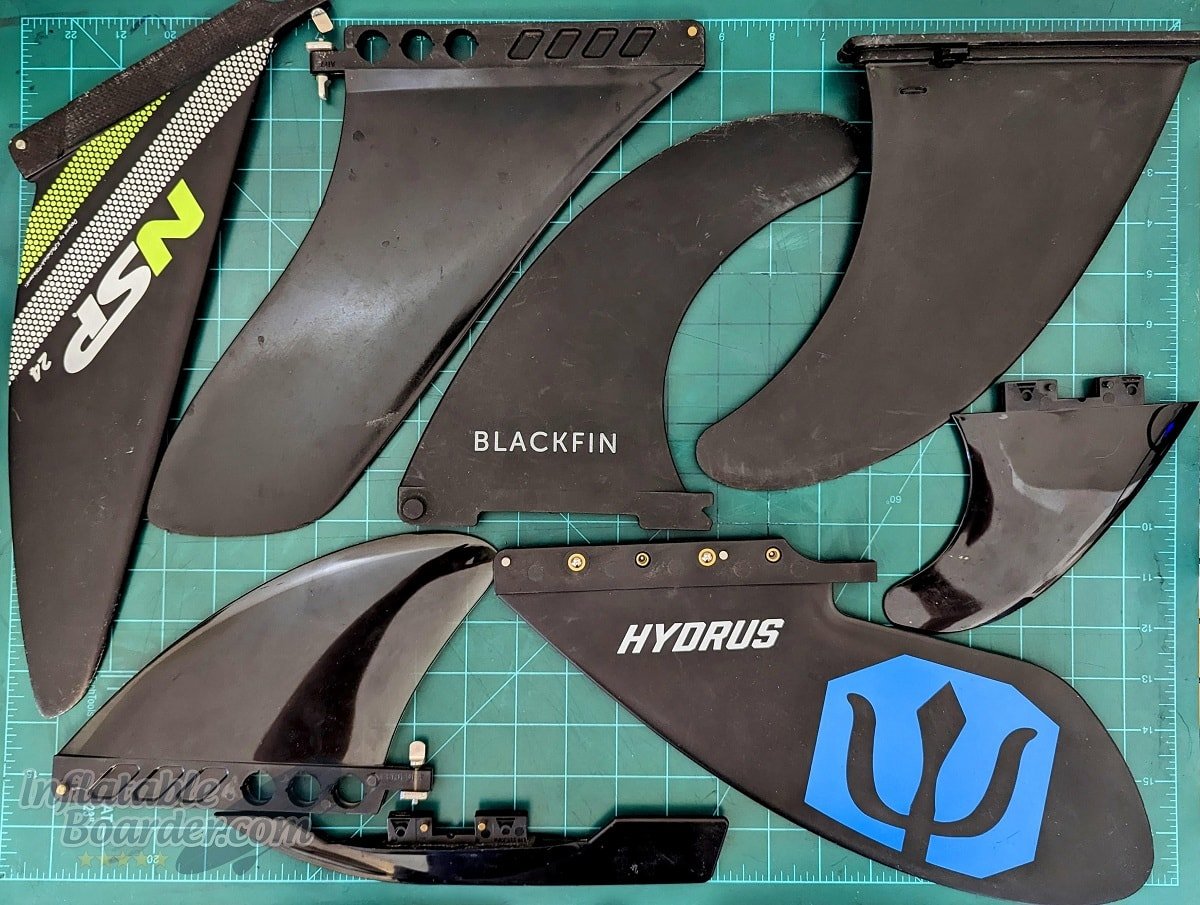
One of the most important elements of a stand up paddle board is its fin or fins. These small protrusions under the board impact all aspects of a SUP’s performance from tracking and maneuverability to speed and stability.
What does a paddle board fin do and how do you choose which fin to use? We’ll cover all of that, and much more, below.
What do SUP fins do?
The simple answer is “pretty much everything.” Fins work by providing resistance in the water. As the board moves across the surface, the fin slices through the water and provides resistance to movement side-to-side, which helps keep you moving straight, and resistance to rolling movement, to help with stability. Certain fins and configurations can also create hydrodynamic lift or they can create excessive drag while moving through the water.
The exact size, shape, placement, and number of fins on your board will change how Your SUP fin/fins are going to impact every level of performance of your board.
For most Stand Up Paddle boarders on flat water there are really only a few fin considerations to make. But for SUP Surfers, racers, and whitewater paddlers, there are many more.
Fin Boxes
Most fins attach to your board via a fin box. This is a plastic housing that is either glued onto the board or built into it. There are different types of fin boxes and each type can only use fins made to work with it.
It’s important to know which type of fin box your SUP has if you are looking to change out your fins. Some fin boxes have thousands of choices, while others may only have a dozen. Some types of fins are easy to find at any local SUP or Surf shop, while others may be proprietary and only available from that brand.
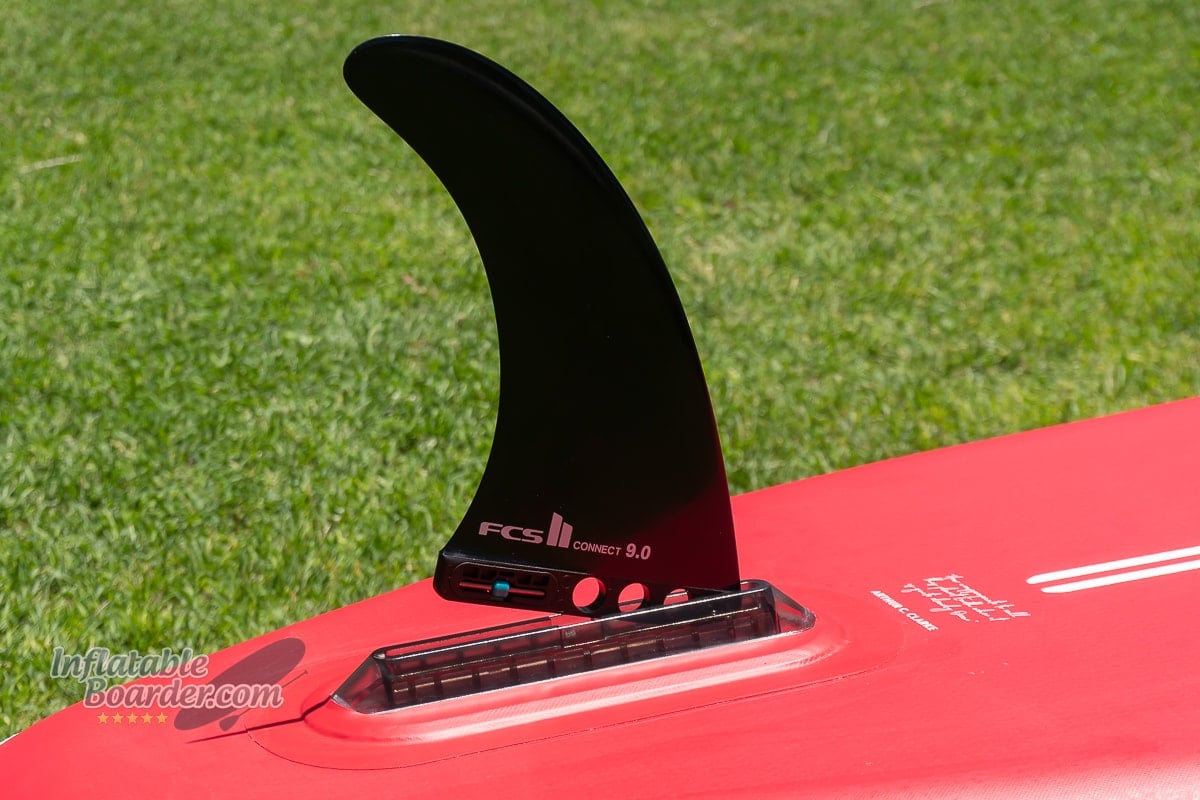
US Fin Box – The “Universal Standard” Fin Box is a widely-used fin box that is compatible with thousands of different fins. Similar in shape, but slightly different in size, Longboard fin boxes are a little smaller. Longboard fins can fit in US fin boxes, but US fins need some modification to fit into longboard boxes.
US and Longboard fins use a fin screw and plate to secure the fin in place. Some fins may be used with “click fin” pressure inserts for tool-less use.
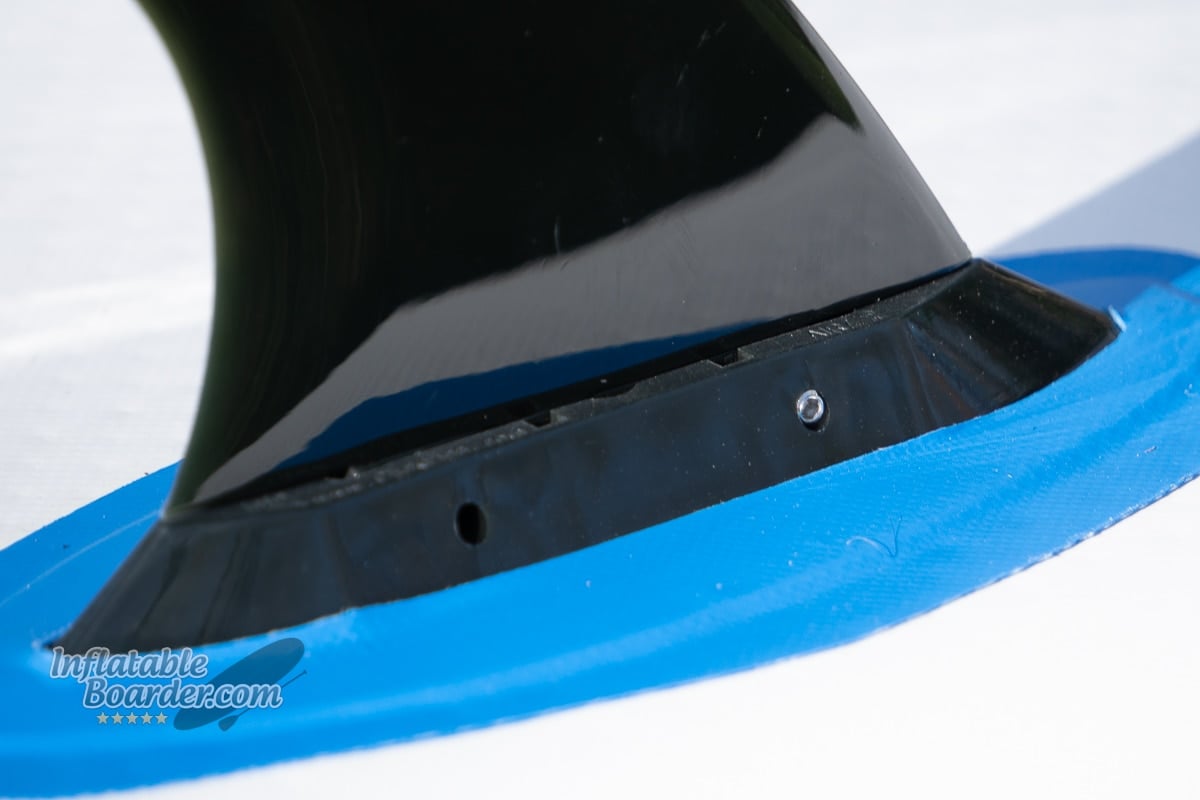
Two-Tab Fin Box – These smaller fin boxes are typically used either for side fins alone, or for all fins in a smaller Surf SUP. They are compatible with hundreds of different two-tab fins that slide and “click” into place, but to ensure their connection, they must be secured with a small grub screw built into the fin box.
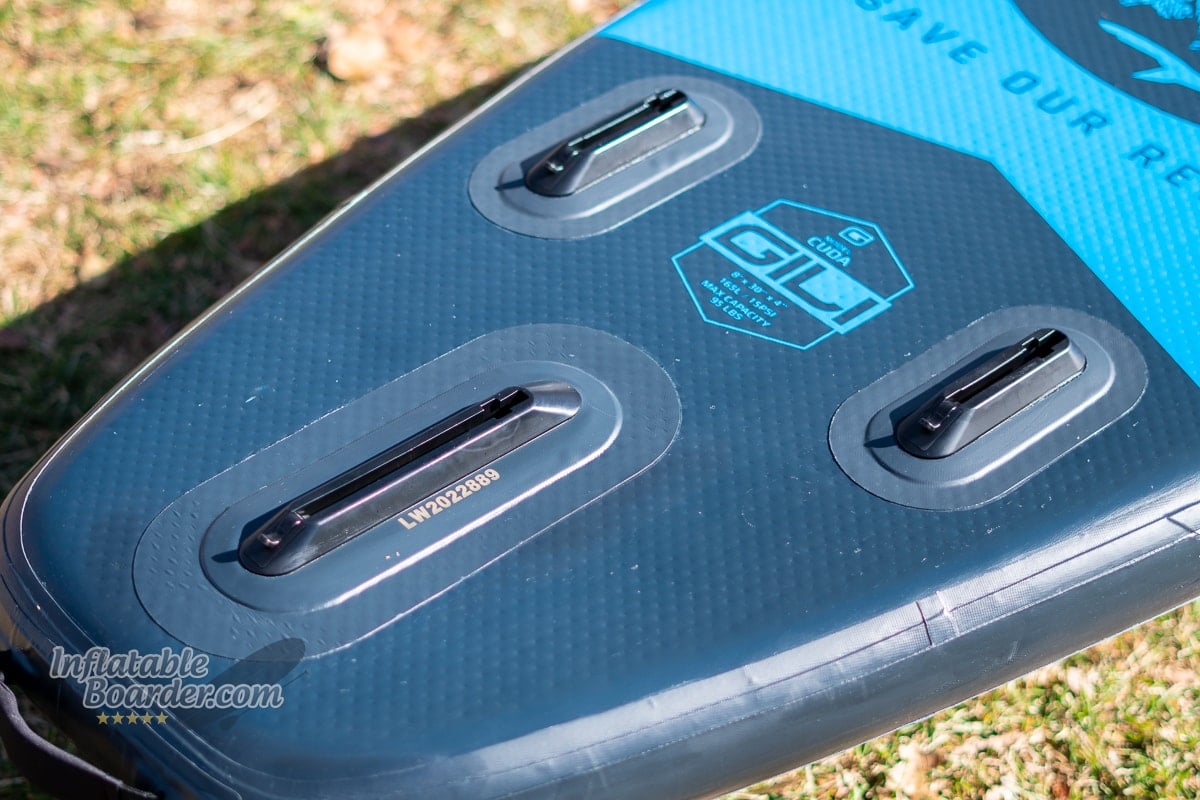
Flip-Lock Fin Box – Flip lock fin boxes are found on many iSUPs and are used for their simple tool-less fin installation and removal. While these fin boxes are easy to use, they are not as secure as bolt-in fins and have only a few handful of fin options. Flip-lock fin boxes also come in two different sizes. A wider base box is typically used for a center fin, and a shorter base box is used for side fins.
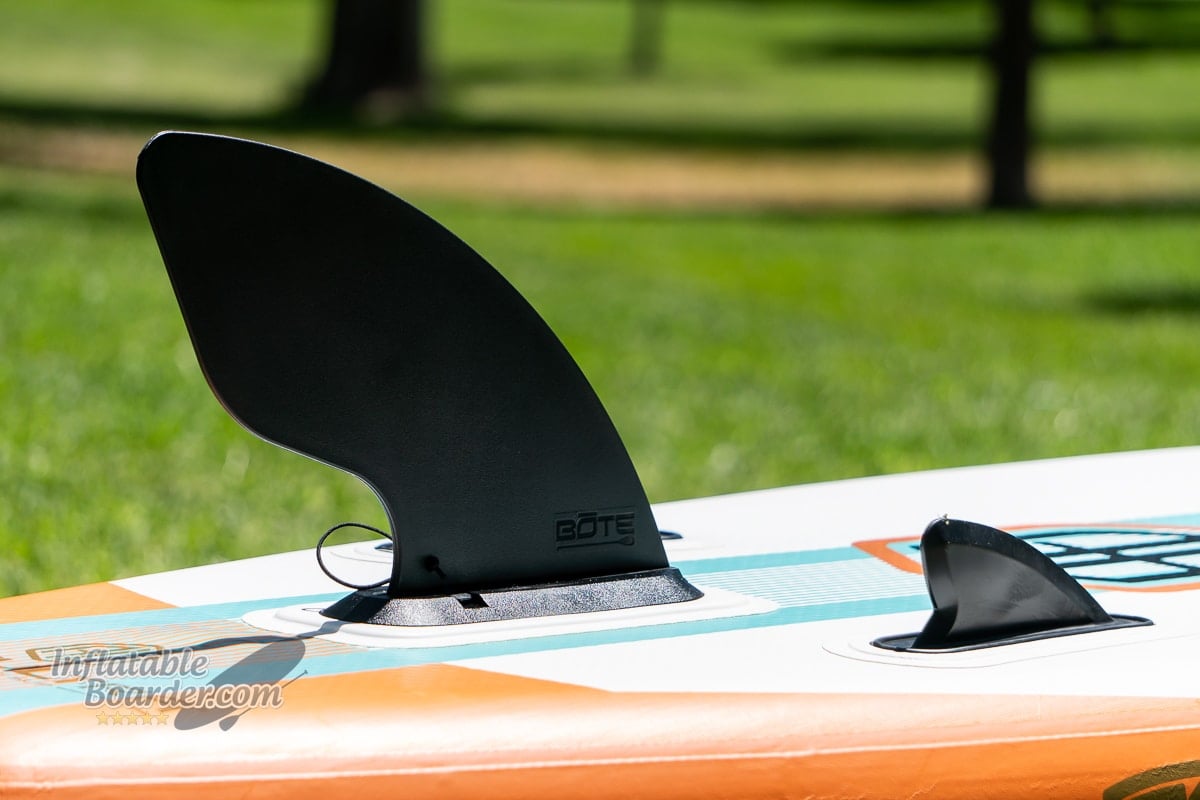
Slide-In Fin Box – Slide-In fin boxes are another iSUP-specific fin box that uses a tool-less installation and removal. These fins slide into the box’s channel and are then secured with a plastic pressure-fit pin. While simple to use, these fin boxes are again limited in the types of fins available to them, and they are more prone to damage if the board is improperly rolled/folded during transportation and storage.
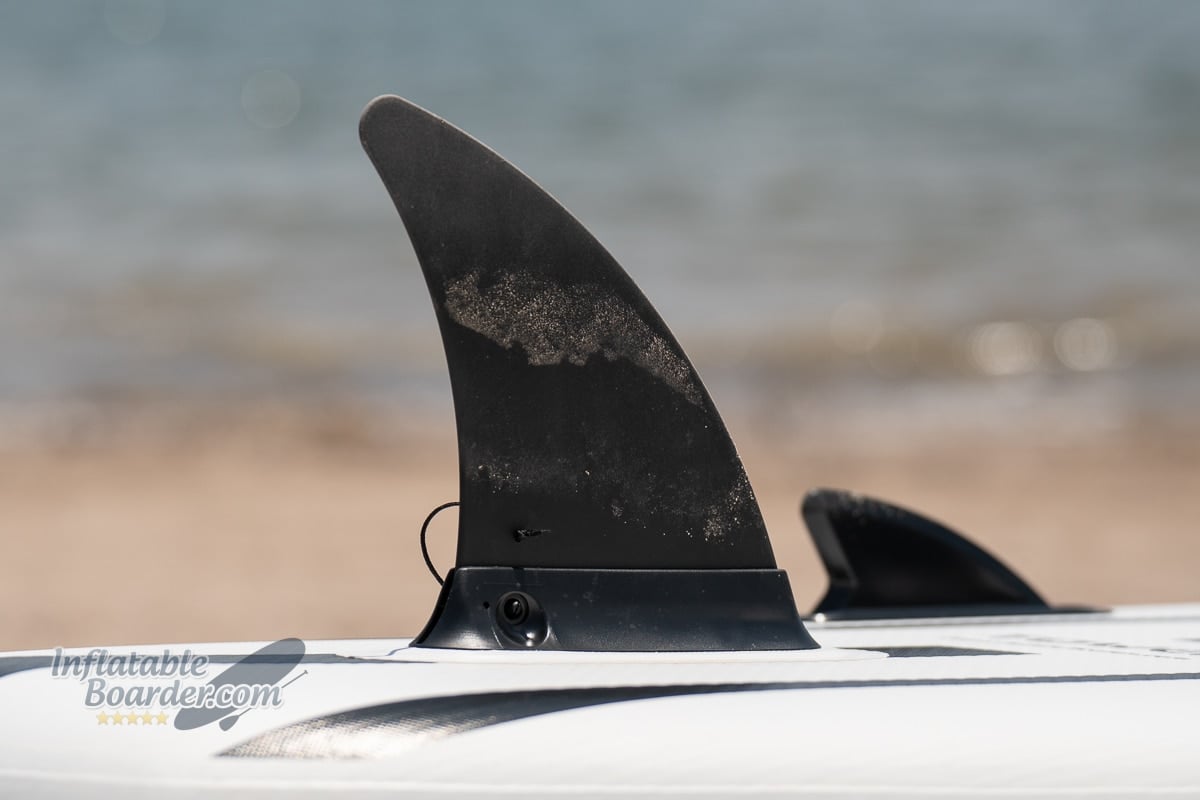
Hook-and-Pin Fin Box – Hook and Pin fins are not commonly found on iSUPs anymore. They used to be more common, but most manufacturers have moved to better functioning and more available products like US fin boxes and Flip-Lock fin boxes. Hook-and-Pin fins work similarly to Slide-In fins, but require the user to blindly “catch” the hook around a specific point in the fin box and insert a pressure-fit pin to hold it in place. There are very few size and shape options for this fin box (less than a handful).
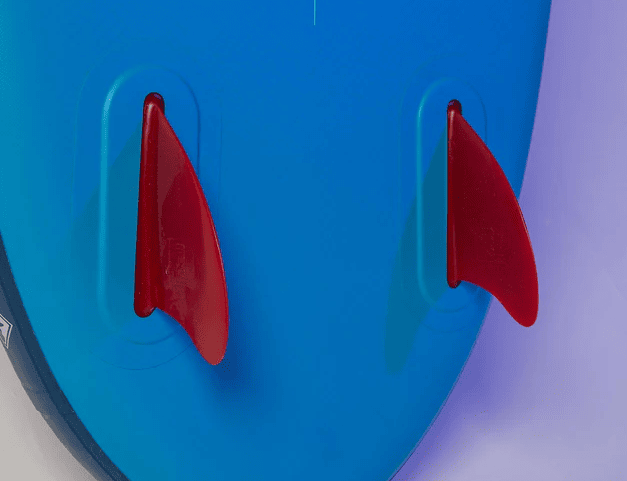
Fixed Fins – Some SUP builders opt for permanently fixing fins to their boards. These fins cannot be changed. On one hand they simplify the setup and tear-down process by eliminating the need to install, remove, and store your fins. On the other hand, their placement, size, and shape must be highly specific in order to achieve good performance on the water.
Specialty Fin boxes – Some Surf SUPs may have specialty fin boxes like Futures boxes or Factory plugs. These require specialty fins and are found mostly in surf boards, but may be found in some Surf SUPs.
Fin Sizes (Length/Depth/Height)
SUP fins come in a wide range of sizes. When we talk about fin size, we typically refer to the fin’s depth or height – how far it protrudes from the bottom of the board. I prefer to use the term “depth” or “length” rather than “height.” There are other size considerations as well, but we’ll talk about those in the Fin Shapes section below.
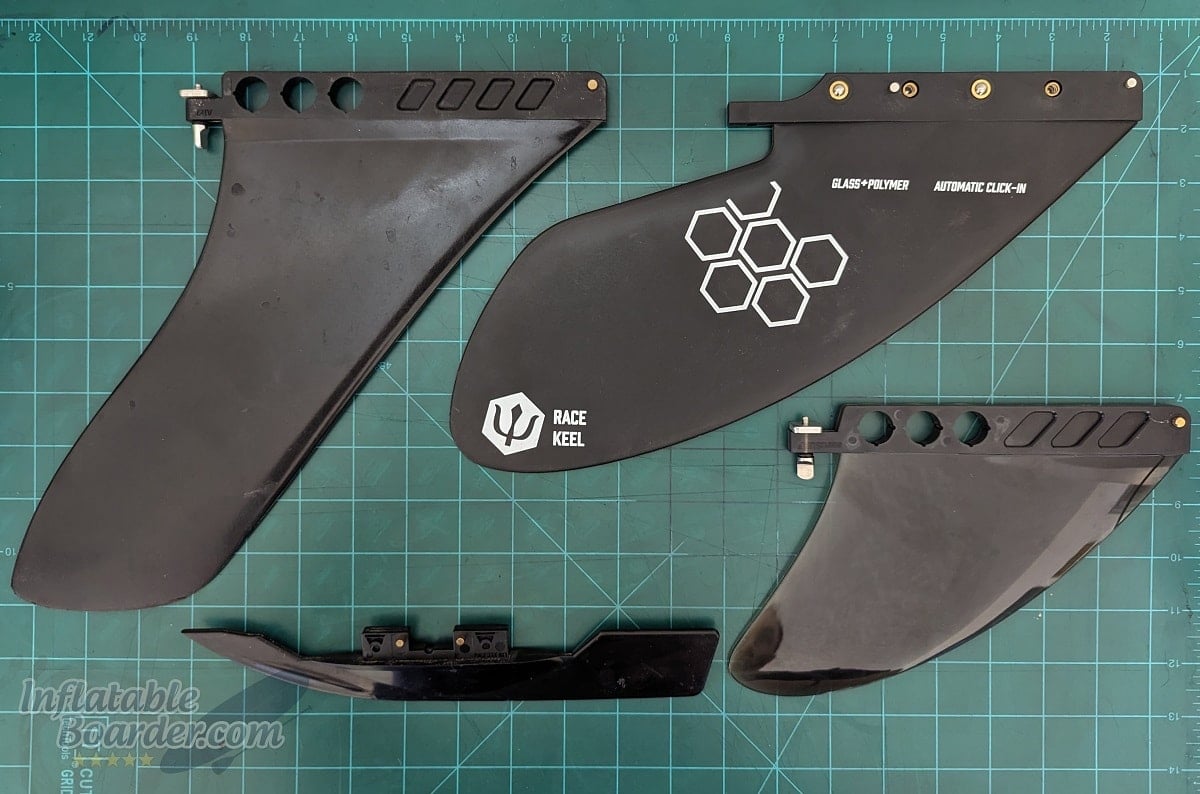
Fin depth is one of the biggest factors in how a fin will perform and it’s usually the first consideration a paddle boarder makes when choosing a fin. SUP fins range in depth from 1.5” to 12”.
Longer fins of the same shape have more frontal and side surface area than shorter fins. This additional surface area creates more drag, or resistance, when moving through the water. This helps prevent the board from turning side-to-side (improving tracking performance), and can increase rolling resistance (improving stability).
The downside of a longer, larger, fin is that it does produce more drag, reducing speed, and it does decrease maneuverability. It can also be an issue if you paddle in shallower water where you are more likely to hit the bottom or an object resting on the bottom.
Shorter fins of the same shape simply reverse those benefits and drawbacks.
Most paddle boards that include a fin will have a center fin between 9-10” long. This length fin usually provides a good balance between tracking, maneuverability, speed, and stability. If your board comes with side fins, they are typically 4-5” long.
All of this can change based on the shape of the fin, fin material, fin placement, and number of fins, though.
Fin Shapes
Fin shape should probably be its own blog post (and probably will at some point!). There are so many different variations of fin shapes that are made for specific uses. I’ll keep it simple for the purposes of this guide.
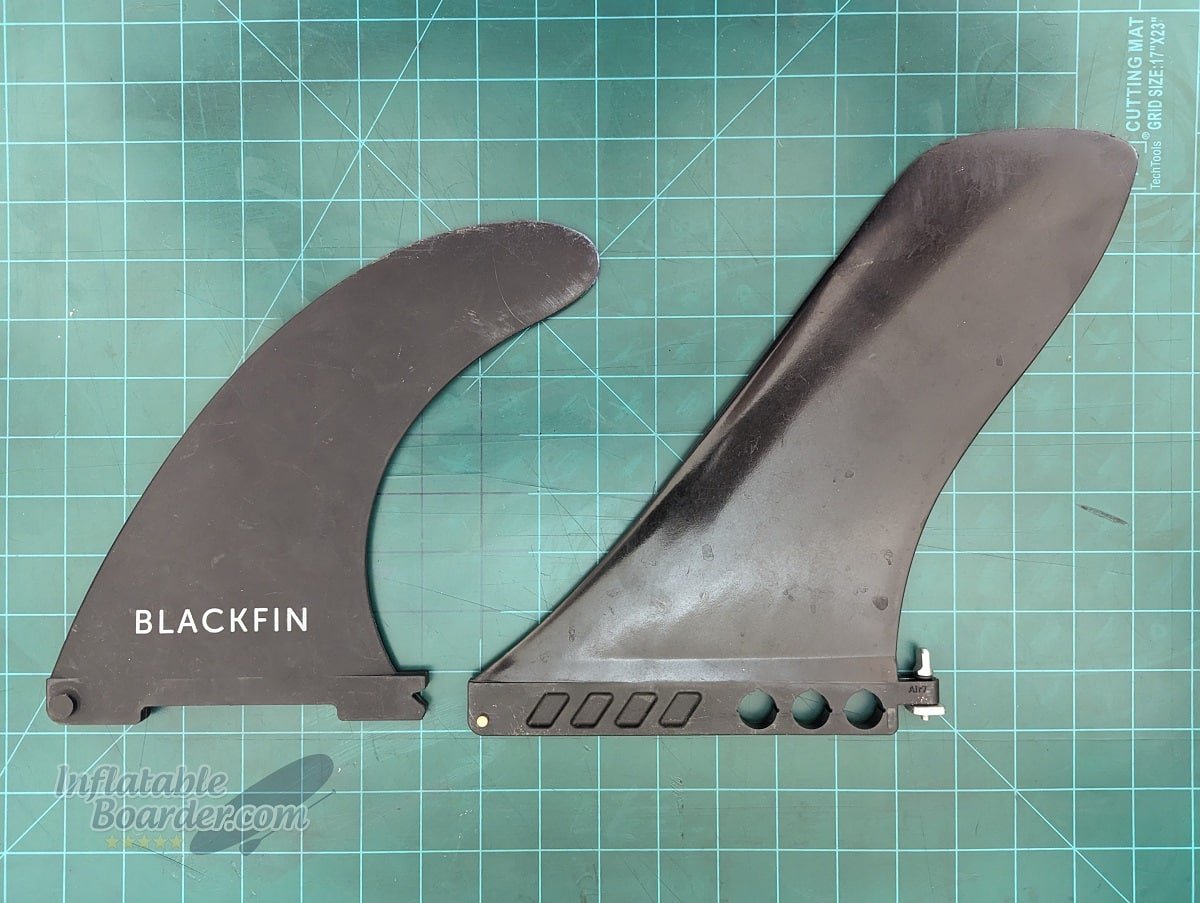
Surf-Style Fins, also known as Dolphin Fins, Flex Fins, or Pivot Fins (though there are slight differences between them) are a very common fin shape for all-around stand up paddle boards. These fins are easily recognized with their iconic tapering shape that sweeps slightly backward.
Surf-style fins for SUP tend to focus on balancing tracking and maneuverability. The tapering end has less resistance in the water, but the swept-back rake angle helps the narrower tip track better than being straight up and down. These fins are commonly 8-9” long.
Touring-Style Fins, also called Hatchet Fins or rectangular fins, are commonly included with touring-style paddle boards. These long, broad fins are typically 9-10” long and usually have a lightly swept-back rake angle.
The additional length and broad tips of touring style fins do a great job of resisting both turning and rotational forces for better tracking and stability.
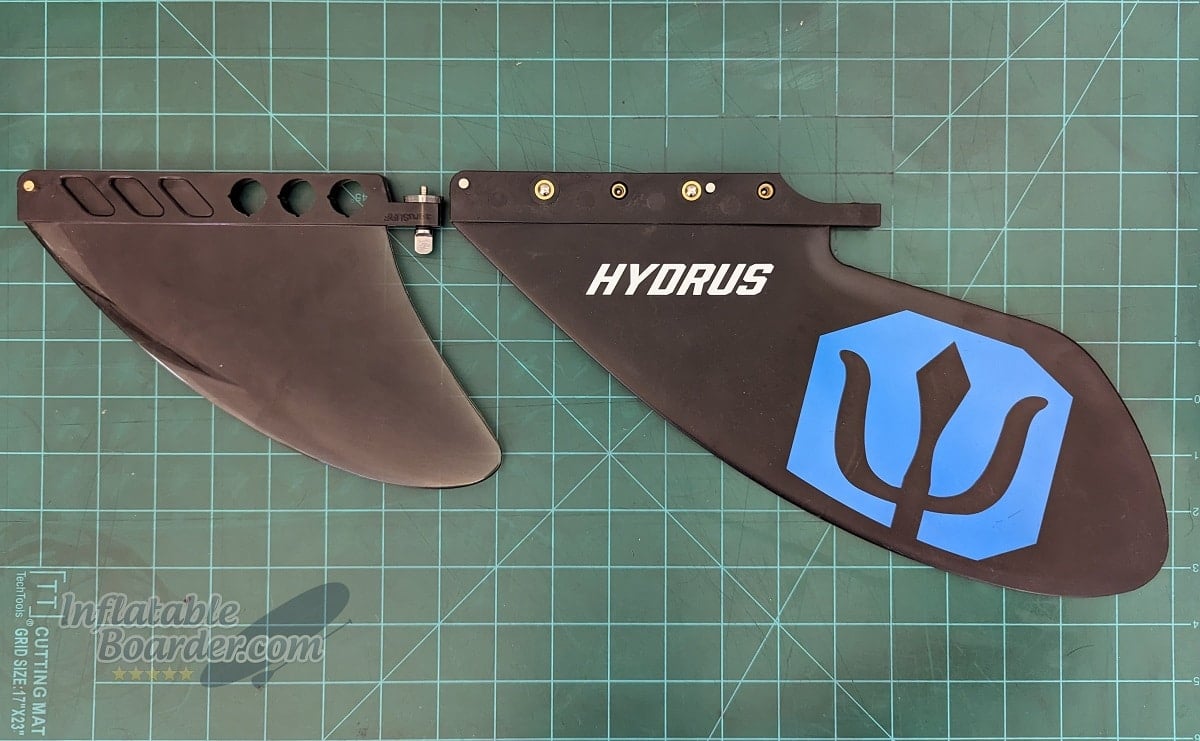
D-Shape Fins are, as their name implies, shaped like a “D”. They may not be exactly that shape, but are typically shorter (4-6”) and broad with a small amount of sweep.
These shorter fins have less surface area and depth than surf- or touring-style fins, so they favor maneuverability over tracking performance. Their shallower depth also makes them a great option for shallow water paddling.
Most SUPs with fixed fins will opt for multiple D-shape fins to help balance the tracking and maneuverability performance without using long fins.
Keel Fins are typically short (less than 6”) and very broad, even extending well behind the fin box itself. Keel fins are primarily used for shallow water paddling. Their flattened shape has more side surface area to help reduce turning and rolling, but are usually not quite as effective as longer touring-style fins.
Keel fins can be as short as 1.5” in depth for extremely shallow water, but are limited in their functionality at such small sizes.
Fin Placement and Setups
Different paddle boards (and surf boards) will have different numbers of fins placed under the tail of the board. These fin setups are designed to perform differently for different uses.
Placement
Where the fins are placed on the board can make a big difference in the board’s tracking and maneuverability. Your paddle board acts like a lever with your standing location as the fulcrum. Putting your fin(s) farther forward (toward the midsection of the board) will reduce tracking and increase maneuverability. Putting your fin(s) farther back toward the tail improves your tracking performance, but makes it harder to turn. Finding the optimum placement of the fin can take quite a bit of trial and error.
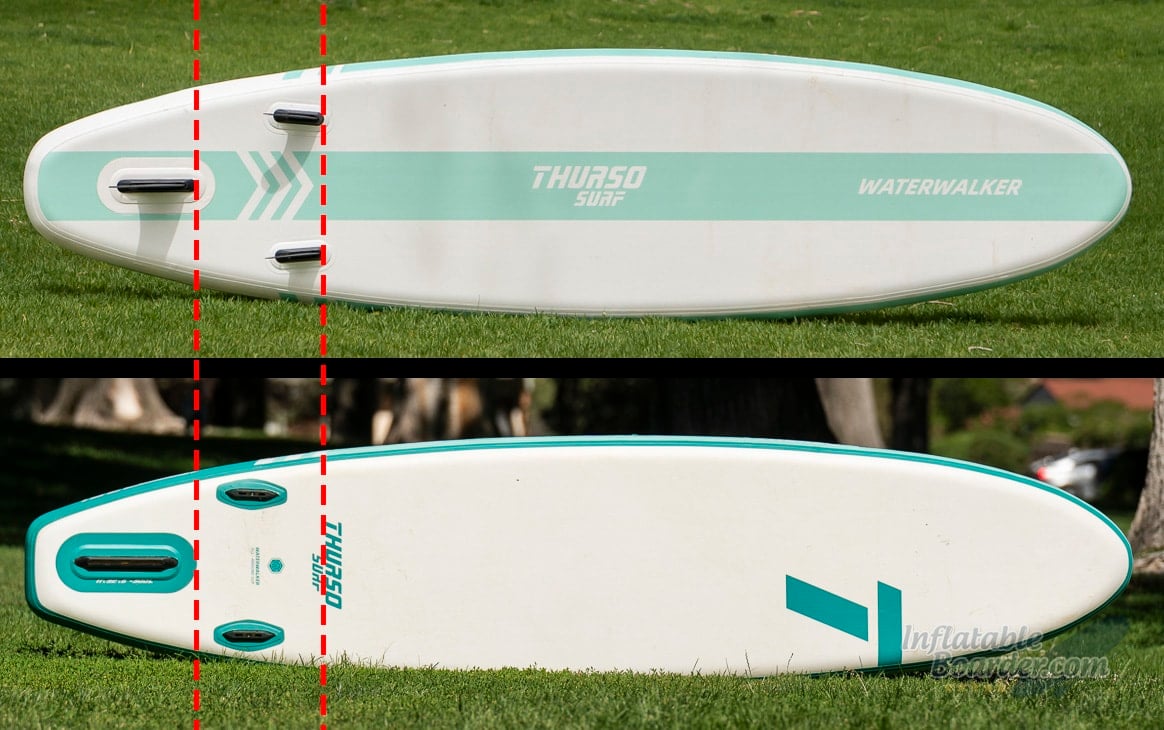
For example, the new 2023 Thurso Waterwalker 132 has the same basic size and shape as the 2022 Waterwalker 132. However, the newer version’s fins are placed farther toward the tail. This changed the average turning rate from 6.3 to 10 strokes to complete a full 360° turn.
Number and Setup
A very common question/concern of readers is about the number of fins on a paddle board. Is it better to have 3 fin boxes or is 1 fin box enough?
Single Fin Setup
For flatwater paddling 1 fin box is all you actually need. A single center fin box with an 8-10” fin will provide an excellent balance of maneuverability and tracking.
Adding fins to your setup will change how the board performs. Additional fins can help increase tracking performance, but can also make the board harder to turn. They can provide a little bit of additional stability, but also slow the board down from additional drag.
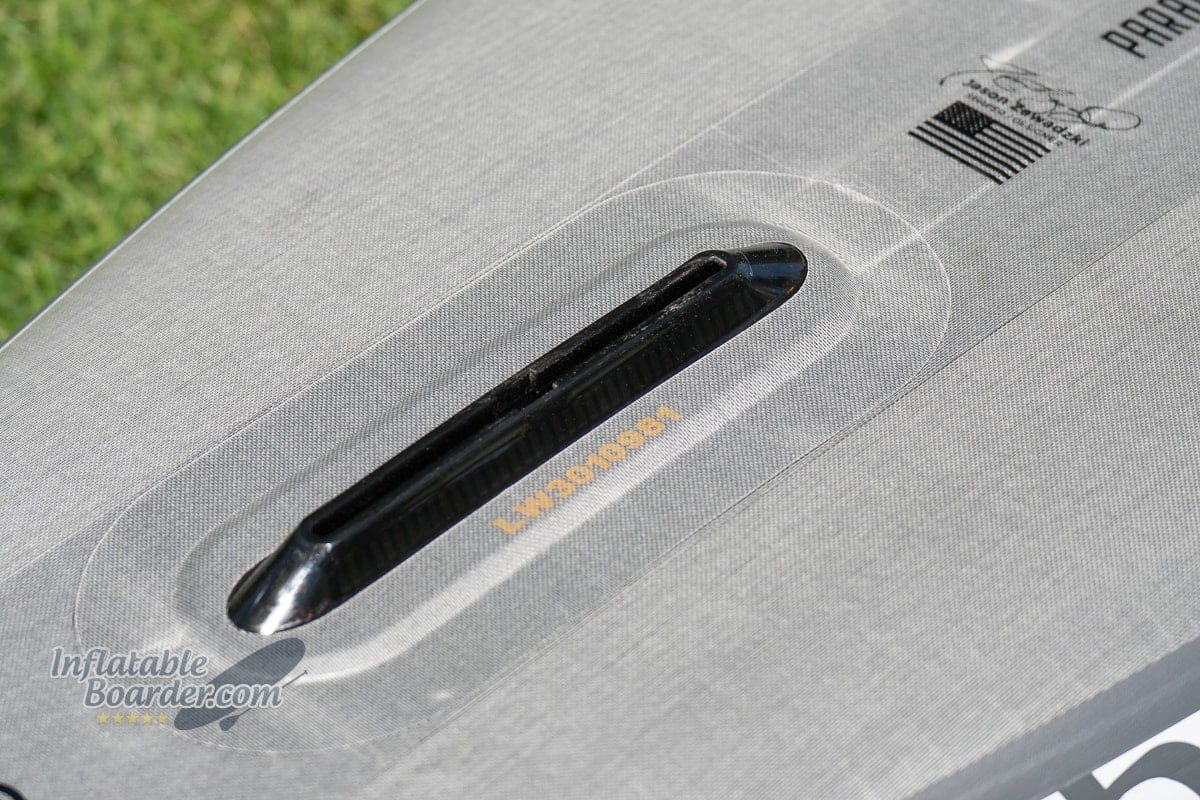
2+1 Fin Setup
A 2+1 fin setup uses one large center fin with two smaller side fins. Will an average paddler truly notice the difference between a single fin and 2+1 fin setup? If they are using them side by side then they will probably notice a difference in maneuverability/tracking (similar to the placement example above). Though it’s not likely that the average paddler will feel a noticeable difference in stability and speed.
But there is a big caveat with this.
Side fins can be installed either parallel to the board’s mid line, or they can be toed-in – angled to point toward the nose. Toeing the side fins is a functional element for surfing. The angle of the fins, plus any foiling of the fin, can create pressure differentials to help the board engage with the face of a wave.
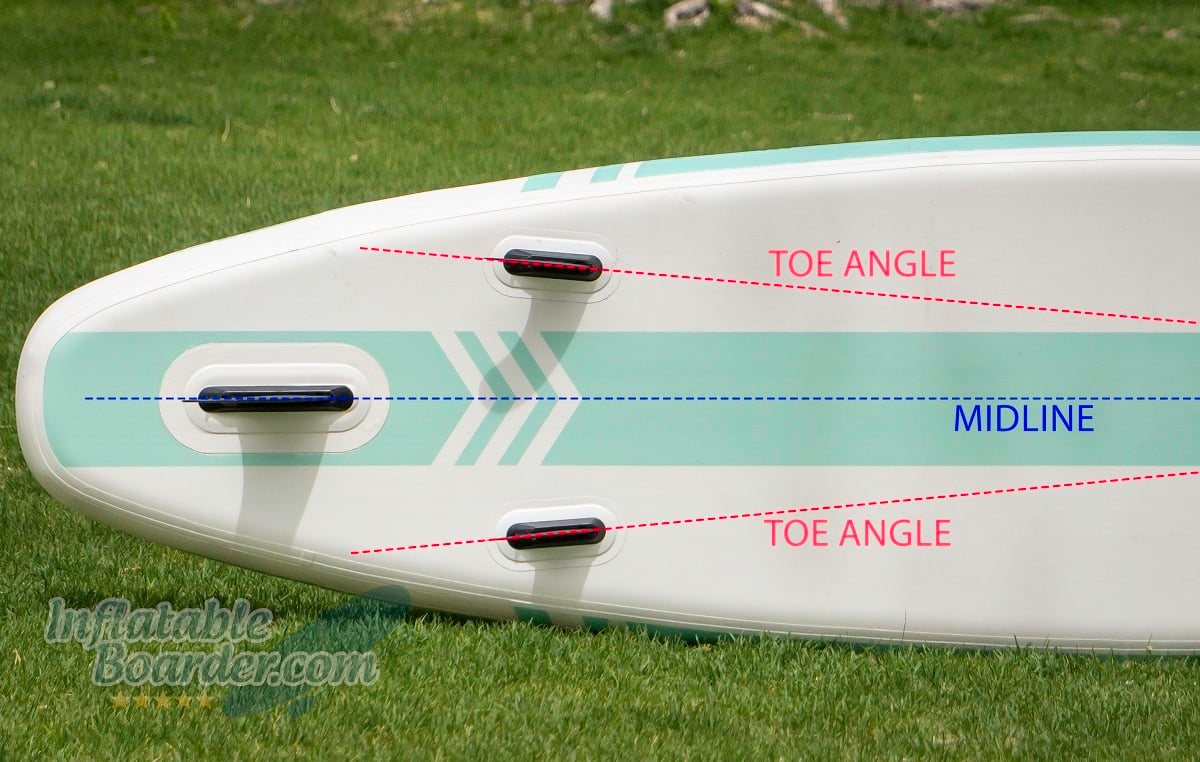
If a paddle board intended primarily for use on flat water (like an all-around board or touring board) has toed-in fins, this is going to be very counterproductive. These toed-in fins create a large amount of drag exerted as you paddle, slowing you down and reducing the efficiency of the board.
Thruster Setup
SUPs with fixed fins frequently use a Thruster fin setup. This is three fins of equal size used together. Generally these are moderately sized D-shape fins (5-6” deep). The aim with this setup is to balance tracking, maneuverability, speed, and stability with fins that are small enough to still be easily rolled with the board for storage. This setup is typically found on all-around style iSUPs.
Twin Fin Setup
With the recent explosion in compact iSUPs on the market, we’re seeing more twin fin setups. These boards use two, equal size, fins on either side of the midline of the board. Twin fin setups usually use moderate size fins 6-8” long to keep some maneuverability while still providing good tracking performance.
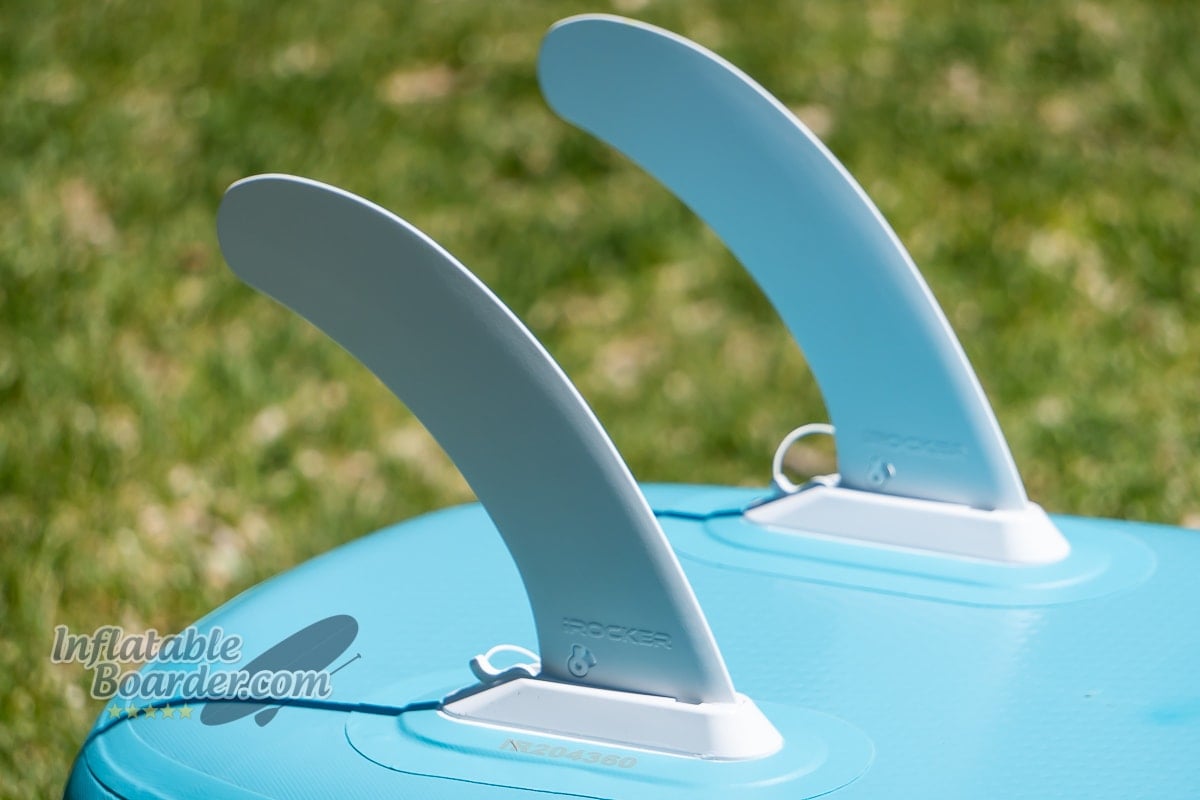
Quad and 5-Fin Setups
These multi-fin setups are found on surf-specific SUPs and some whitewater SUPs. The fin boxes may all be smaller varieties (like Two-Tab fin boxes) or the inner fin boxes may be larger (Futures or US fin boxes). Having this many fin boxes allows you to very precisely dial in your performance characteristics on the wave, or to utilize many smaller fins for better line control without going significantly deeper in the water while paddling whitewater.
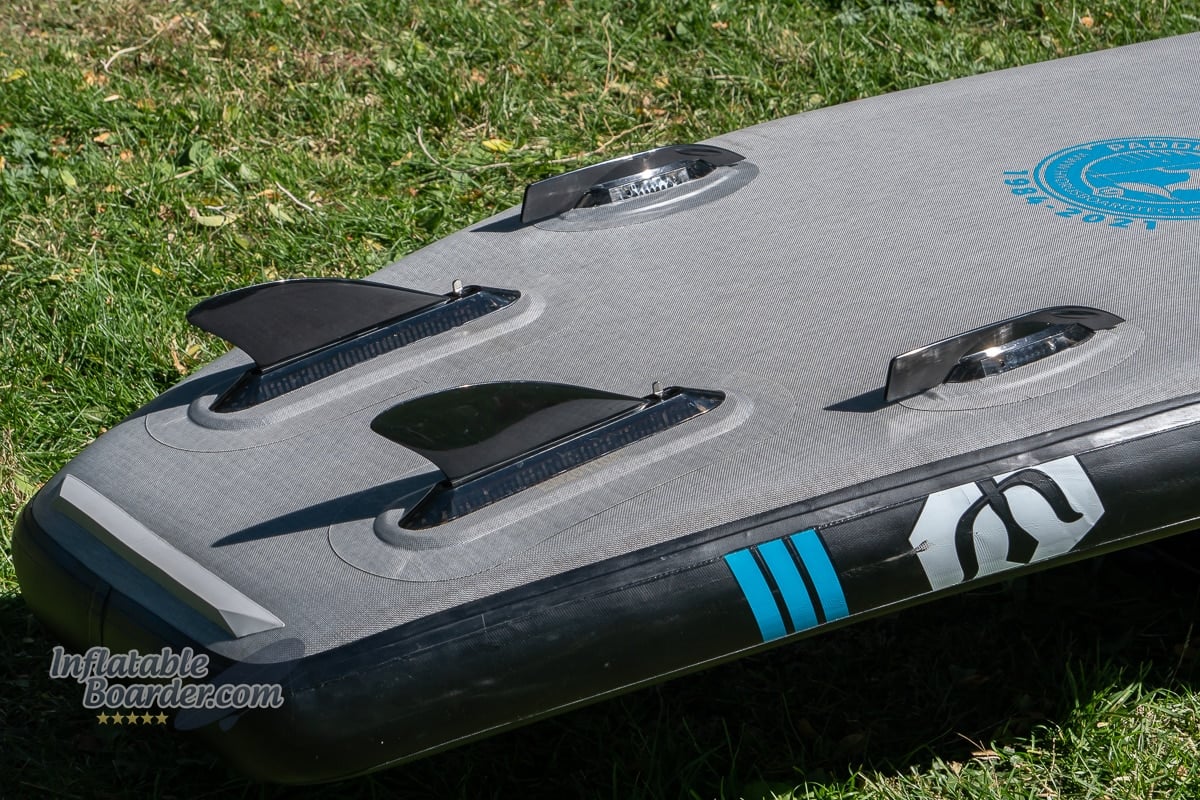
Side Bite Fins
Side bites are additional fins on either side of the centerline of the board, however in this context I am specifically referring to the small plastic fixed fins that are found on many iSUPs.
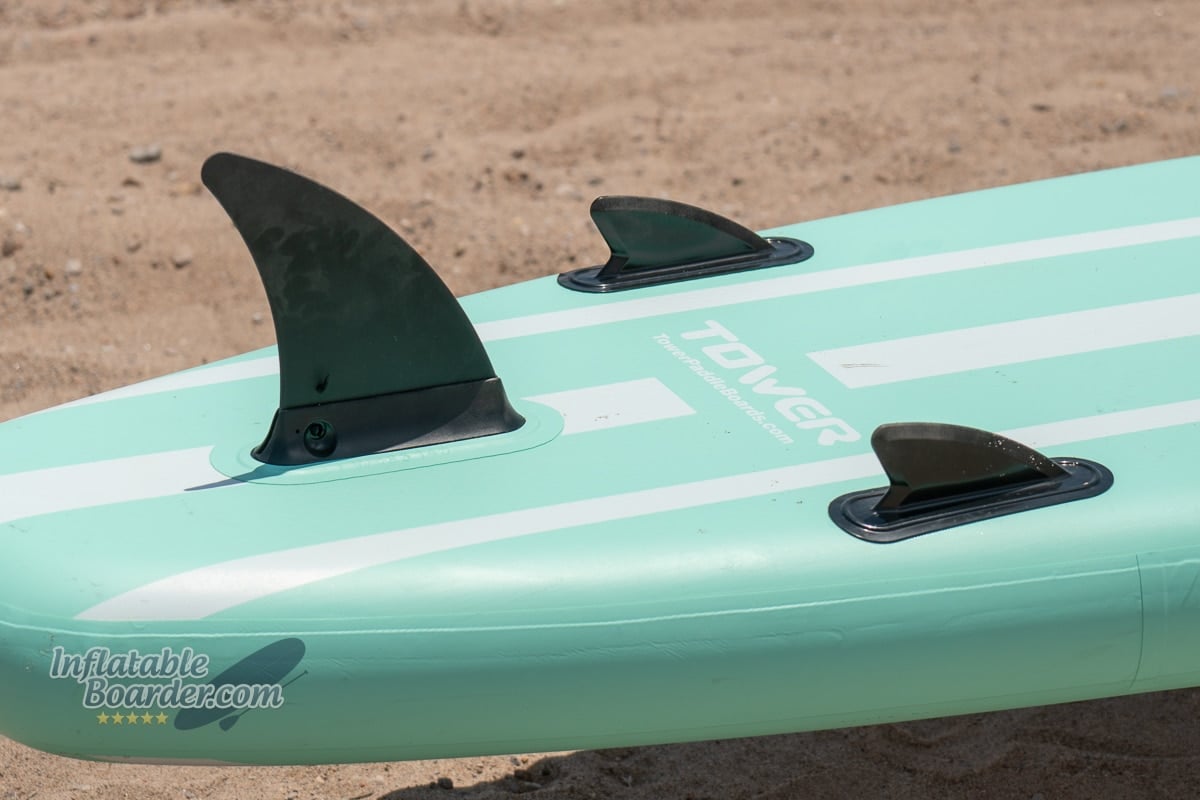
These side bite fins are purely for aesthetics and not for performance.
The fins themselves are very small, typically 1.5” deep and 3-4” across. They also tend to be very thick compared to a traditional fin. They don’t provide enough surface area to actually improve your tracking ability, nor do they have enough area and stiffness to assist in surfing your iSUP. Often these side bite fins are also toed-in, which means the only purpose they can serve is to produce drag in the water when paddling.
Dear SUP Industry,
Please stop putting these little plastic “side bite” nubbins on your boards. They do nothing except increase production cost.
Sincerely,
Mike Carney, InflatableBoarder.com
Fin Materials
The type of material determines the fin’s weight, stiffness, and durability.
Weight is usually not a concern for most paddlers, but is for competitive racers or performance SUP surfers.
Stiffness can directly impact the fin’s performance in the water. A flexible fin will not resist turning and rolling forces as well as a stiff fin. However a flexible fin may be more forgiving and durable in shallow water.
There are three common materials used for SUP fins.

The first is hard plastic. These fins are heavy, inexpensive, and relatively impact resistant. They have some flex, but very little shaping beyond the outline of the fin. Some plastic fins have composite (usually fiberglass) cores that make them much stiffer, but still have the durability of the plastic exterior.
Soft plastic fins are likewise a little heavy, inexpensive, and are very impact resistant. The soft fins will bend and flex when they hit an object in the water, making them ideal for shallow water, and they are less prone to breaking than hard plastic, making them great for iSUPs with fixed fins.
Composite fins are made with either fiberglass, carbon fiber, or kevlar (or some combination) with a resin matrix. These fins are lightweight, very stiff, and can be easily shaped to include various foil profiles for high-performance paddling. They are also significantly more expensive, and significantly less durable than plastic or composite-core plastic fins.
So What Fins Should I Use?
Here are a few general starting points for selecting your stand up paddle board fins:
- For flat water paddling or entry-level SUP surfing, a surf style fin 8-10” long is a great place to start.
- If you want more tracking performance, swap your fin for a touring-style fin 9-12” long.
- River and shallow water paddlers should opt for a flexible plastic fin, either D-shape or Keel shape, around 4-6” long.
- Whitewater paddlers may want to use SUPs with multiple fin boxes to run multiple shorter fins (1.5-4”) to balance maneuverability, tracking, surf-ability and draft depth.
- Intermediate and advanced SUP Surfers should consider using a paddle board with a multiple fin setup. Either a 2+1 or Thruster setup is a good start. For performance surfing a quad or 4+1 setup lets you really dial in your fin selection and placement.
Final Thoughts About SUP Fins
If you are just starting out with Stand Up Paddle Boarding, the fins that come with your board will be more than sufficient to get you standing and paddling confidently. Most paddlers are happy with a basic 8-10” surf or touring-style fin for a long time. As you progress in skill and want to try more specific types of paddling, that’s when you should consider what type of SUP fin to use (as well as your board and paddle). As a river rat myself I’m frequently running shorter fins depending on what kind of river paddling I’m doing. But I also enjoy racing and destination touring. In my garage you can find everything from 1.5” to 11” fins of all kinds of shapes. Just like having different boards and paddles, having a quiver of different fins to choose from can make a difference in your next paddling adventure.
